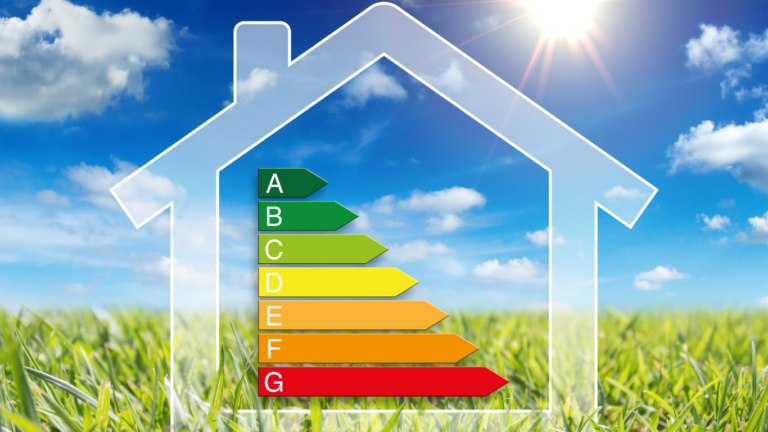
Your Ultimate Custom
1-Year Prepper's Checklist:
Food & Water, Energy, and Everything Else
Table of Contents
Table of Contents
Food & Water Checklist
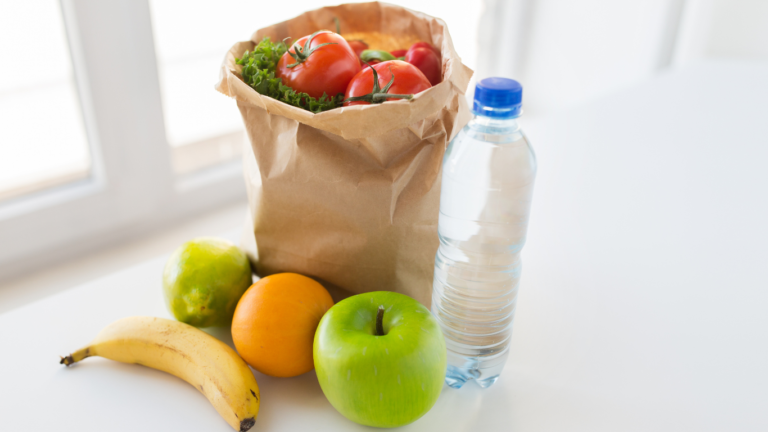
Food & Water Checklist

Calculate How Much Food You Will Need During an Emergency
“How much food will we need in an emergency? Do we have enough?” These are common questions. Luckily, calculating your household’s food needs is a simple task.
Is This Step For You?
YES. This should be the first step of every food preparation plan.
Calculate Your Household’s Calorie Needs

Enter the following information into the household calorie calculator, and we’ll give you an estimated number of calories that you should stock up on:
- Number of men in the household
- Number of women in the household
- Number of children in the household
- Ages of the children in the household
- How many days worth of a food supply do you want to have in reserve?
Remember, these numbers are only an estimate but will vary on a case-by-case basis.
Daily Calories Needed for Household: 0
Keep this calorie count in mind when you’re stocking up on emergency food.
1. First, calculate how many daily calories the men in your household will need:
Number of men in your household × 2,500 calories/day = ______ calories per day
2. Then, calculate how many daily calories the women in your household will need:
Number of women in your household × 2,000 calories/day = ______ calories per day
3. Then, calculate how many daily calories the children in your household will need:
Number of children in your household × 500-2,000 calories/day (depending on age) = ______ calories per day
4. Add up the total daily calories needed for your household:
Total daily calories for men in the household + Total daily calories for women in the household + Total daily calories for children in the household = ______ total needed household calories per day
5. Finally, factor in the amount of time that you want to be prepared for:
Total needed household calories per day × number of days you want to be prepared for = ______ total calories.
For example: if your household has 1 man, 1 woman, and 2 children ages 5 and 10:
1. Daily calorie consumptions for the men in the household = 2,500 × 1 = 2,500 calories per day
2. Daily calorie consumptions for the women in the household = 2,000 × 1 = 2,000 calories per day
3. Daily calorie consumptions for the children in the household = 1,000 + 1,600 = 2,800 calories per day
4. Total needed household daily calorie consumption = 2,500 + 2,000 + 2,800 = 7,300 calories per day
5. To have enough food to last the household 6 months (180 days), you will need to have 180 × 7,300 = 1,314,000 total calories.
Stock Up on Survival Food
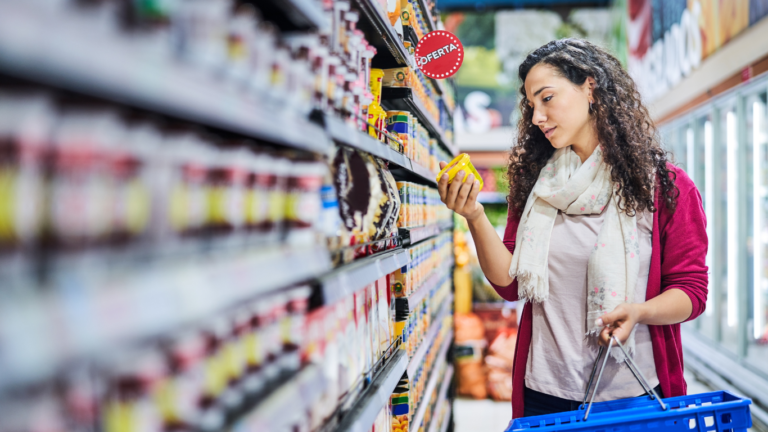
Is This Step For You?
YES. This should be a part of every food preparation plan.
Checklist
- They are prepared and stored to last for decades — which can’t be said about store-bought foods
- They are designed to be quick and easy to prepare
- You can get an assortment of tasty meals that you’ll enjoy during an emergency
- Although more expensive, you can still get great prices for ready-made meals
You can also get great survival foods at your local grocery store.
Remember to keep track of how many calories of food you have stored, and continuously compare it to your households total calorie needs that you’ve calculated above.
Most survival food is best to be stored in a dark, dry, cool place. The ideal temperature is usually between 40 and 70 degrees Fahrenheit.
Recommended Survival Foods Checklist:
| Food | Benefits |
| Rolled Oats |
|
| Honey |
|
| Protein Powder |
|
| Dried or canned beans |
|
| Powdered Milk |
|
| Rice |
|
| Pasta |
|
| Powdered mashed potatoes (bagged, potato flakes) |
|
| Wheat |
|
| Soybeans |
|
| Dried Corn |
|
| Bouillon Products |
|
| Canned Meat & fish |
|
| Other canned food |
|
| Whole white crackers |
|
| Peanut butter |
|
| Energy bars |
|
| Cereal |
|
| All-in-one meals |
|
| Nuts |
|
| Spices/seasoning |
|
| Avocado oil & other oils |
|
| Clarified butter |
|
| Coffee |
|
| Dried meat (beef jerky) |
|
Other recommended items to consider are:
- Baby food (if needed)
- Pet food (if needed)
- Rubbing Alcohol/Vodka: has many uses at home such (fire starter, hand sanitizer, antiseptic for wounds, disinfectant, etc)
- Apple Cider Vinegar: has many uses around the house
- Vitamins/Multivitamins
Ensure Your Water Needs

Is This Step For You?
YES. This should be a part of every food preparation plan.
Checklist
- Stock up on drinking water
- Stock up on cooking water
- Identify fresh water sources near you (preferably flowing water like a river, creek or stream)
- Get portable water filtration systems (Recommended: At least 1 personal or bottle filter per person, and at least 1 gravity-fed or pump water filter per household).
- Personal Water Filter
- Gravity-Fed Water Filter
- Pump Water Filter
- Bottle Water Filter
Resources
Blog: Guide on picking the right portable water filter for you
Our Top Product Picks:
| Product | Image |
|---|---|
| Personal water filter |  |
Bottle water filter: | |
Gravity-Fed Water Filters | |
| Pump water filter |  |
Start a Garden

Is This Step For You?
IT DEPENDS. Here’s a couple of questions to answer to find out whether starting a garden is the right move for your emergency prep plan:
- Is becoming food self-sufficient in the long term one of your goals?
- Are you prepared to invest at least $50-$100 to get started?
- Do you have at least 50-100 square feet (or more) of garden space?
- Do you have some time to commit to starting a garden? Although starting a garden usually isn’t very labor intensive it will take some time and effort – especially in the beginning
Checklist
- Garden tools & equipment:
- Gloves
- Pruners
- Wheelbarrow
- Trowel
- Watering Can
- Garden Hoe
- Hand fork/cultivator
- Long-handled shovels and spades
- Rake
- Seeds & Fertilizer
Resources
Blog: Here’s a guide on how to start a vegetable garden from scratch in 7 easy steps.
Our Top Gardening Equipment: If you want to get a complete, high-quality gardening set without spending a lot of time and money, check out our favorite, affordable Tudoccy gardening set.
Food Preservation

Is This Step For You?
IT DEPENDS. Engaging in food preservation at home may be for you if:
- Becoming fully food self-sufficient in the long term is a goal for you.
- You have your own consistent source of food (such as gardening, keeping poultry or cattle, hunting or fishing).
- You are prepared to invest $30-$200 for the equipment you need to get started
- You are willing to invest some time and effort to learning food preservation techniques (this doesn’t require a whole lot of time)
Checklist
- Food canning equipment
- Large pot (for boiling water)
- Canning jars with lids and rings
- Jar lifter
- Canning funnel
- Gloves
- Pressure canner (for low-acid foods like vegetables and meat)
- Water bath canner (for high-acid foods like fruit and pickles)
- Thermometer (to measure the temperature of the water)
- Bubble remover tool (for removing excess air from the jars)
- Dehydrator for food drying
- Smoker or smoking gun for food smoking
Resources
Blog: Complete guide on food preservation
Our Top Product Picks:
Start Chicken Farming

Is This Step For You?
IT DEPENDS. To figure out whether chicken farming is right for you, answer the following questions:
- Is becoming food self-sufficient in the long term one of your goals?
- Are you prepared to invest at least $500 to get started?
- Do you have at least 10-15 square feet (or more) space available per chicken?
- Do you have some time to commit to chicken farming? Although chickens are mostly independent and less time-consuming than other animals, it will take a moderate amount of time and effort, especially in the beginning.
Checklist
- Equipment
- Chicken coop
- Feeders
- Feed
- Waterers
- Heat lamps
- Incubator (if hatching eggs)
- Cleaning supplies (shovels, brooms)
- Butchering tools for meat production (sharp knife or cleaver, cutting board, bucket or sink for cleaning and chilling the chicken, kitchen shears, pliers for feather removal, and gloves)
- Chicken
Resources
- Full guide on starting a chicken farm.
- Great video by Anavo Farm on choosing the right chicken breeds, and where to get them.
- Products: Best chicken products from our trusted expert
Calculate Your Household Energy Needs
“How much energy will I be able to generate in an emergency? Am I sufficiently prepared?” These are common questions. We’ll walk through how you can calculate your household’s energy needs.
Is This Step For You?
YES. This should be the first step of every energy preparation plan.
Calculate Your Household’s Electricity Needs

This means finding out 2 metrics:
- Electricity consumption (Kilowatt hours): How much total energy do you consume in an average month. The average monthly energy consumption for US homes is 886 kWH.
- Electricity usage (Kilowatts): How much energy are you using at any given moment (i.e., how many appliances are you using at the same time). For most homes, anywhere between 5 kW and 10 kW should be enough output to power all the devices you need.
Calculating Your Home’s Electricity Consumption
The easiest way to get an understanding of your household’s electricity consumption (Kilowatt hours) is to look at your electricity bill. Find your average kWH usage per month. You may want to look at the last several months of electricity usage to account for unordinary months.
It’s also useful to make the distinction between essential electricity consumption versus unessential consumption that you can live without in an emergency situation.
You can estimate your essential monthly electricity consumption by using this list of common household appliances and how much electricity they usually consume:
- Electric furnace = 10.5 kWh per hour
- Central air conditioning = 3.0 kWh per hour
- Ceiling fan = 0.05 kWh per hour
- Electric water heater = 2 kWh per day
- Oven = 2.3 kWh per hour
- Microwave = 0.15 kWh per 5 minutes
- Dishwasher = 2 kWh per load
- Toaster = 0.04 kWh for every 2 slices
- Refrigerator = 150 kWh per month
- Freezer = 90 kWh per month
- LED 4k 75’’ television = 0.15 kWh per hour
- PlayStation 4 = 181 kWh per year
- Laptop = 0.04 kWh per hour
- Clothes dryer = 3 kWh per load
- Vacuum cleaner = 0.75 kWh per hour
Calculate Your Home’s Needed Electricity Usage
This household electricity usage calculator will give you a good understanding of how many watts of power you’ll need at any given time to operate your regular household appliances.
Just select the appliances you’ll be using at any one time, and we’ll generate an estimate of your power usage at that moment.
Measure your needed electricity output (Watts or Kilowatts), or the wattage of your most important appliances. Your output capacity will determine how many appliances you can operate at any given moment, as opposed to energy consumption which tells you how much total energy you consume in a month.
Here’s a list of common home appliances/devices and how much electricity output they generally require, to give you a better understanding of what electricity output you need:
- Coffee maker: 900–1,200 Watts
- Dishwasher: 1,500–2,100 Watts
- Ceiling Fan: 65–175 Watts
- Clothes washer: 350–500 Watts
- Clothes dryer: 1,800–5,000 Watts
- Hair dryer: 1,200–1,875 Watts
- Vacuum cleaner: 1000–1400 Watts
- Water heater (40 gallon): 4500–5500 Watts
- Laptop: 50 Watts
- Microwave: 800-1,000 Watts
- Toaster: 1,000–1,200 Watts
- Refrigerator: 100-400 Watts
- 27″ TV: 113 Watts
Write Down Your Home’s Electricity Metrics
Your average monthly electricity consumption is: ______ kWH
Your average monthly essential electricity consumption is: ______ kWH
Your needed electricity output is: ______ kW
*Keep in mind: 1,000 watts = 1 kilowatt.
Stock Up On Energy Supplements
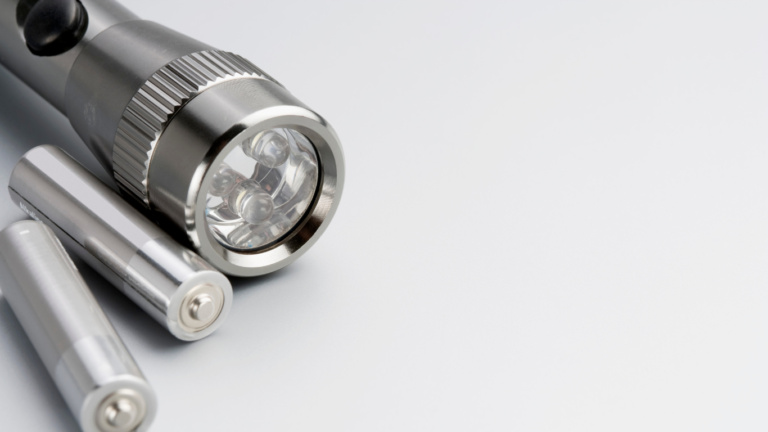
Although they are not a viable long-term replacement for your energy needs, energy supplements are generally very affordable and you’ll be glad that you have them in both short-term and long-term power outage situations.
Is This Step For You?
YES. This should be a part of every energy preparation plan.
Checklist
- Flashlights
- Batteries
- Candles
- Lighters
- Matches
- Propane cylinder (if you have propane-powered appliances)
- Butane cans (if you have butane-powered appliances)
Resources
Our Top Product Picks:
| Product | Image |
|---|---|
| Flashlight set recommended for all preppers: EverBrite 30-Pack Mini Flashlight Set |  |
| Our favorite single flashlight: GearLight S2000 LED Flashlight. Quality, reliable, versatile, and strong. |  |
 |
Make Your Home More Energy Efficient
Is This Step For You?
YES. Improving your home’s energy efficiency should be a part of every energy preparation plan. That being said, not all items on the checklist may be right for you.
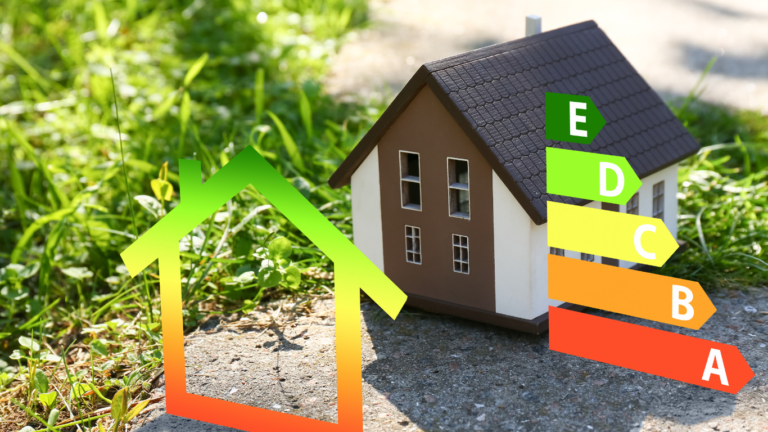
Checklist
- Replace Incandescent Bulbs with LEDs
- Utilize natural lighting & heating during the day by
- Upgrade to a Programmable Thermostat
- Regular HVAC Maintenance
- Improve Insulation
- Choose ENERGY STAR® Appliances
- Install Low-Flow Fixtures
- Fix Leaks Promptly
Resources
Blog: Creating an Energy-Efficient Home: A Comprehensive Guide to Boosting Home Energy Efficiency
Our Top Product Picks:
| Product | Image |
|---|---|
| Bright LED light bulbs (60W equivalent) – 750 Lumen |  |
| Super-bright LED light bulbs (100W equivalent) – 1500 Lumen |  |
| Honeywell smart thermostat with extra large backlit display |  |
| Our favorite & best-value low-flow showerhead |  |
| Stylish, low flow Delta faucet with at least 20% less water usage that industry standard without decreased performance |  |
Get An Electricity Generator
A generator will allow you to generate and use electricity during a power outage. Generators are surprisingly affordable.
However, generators require some type of fuel to convert into energy (for example gasoline, propane, diesel, solar, etc), so be sure to stock up on the right kind of fuel to power your generator.
Is This Step For You?
IT DEPENDS. Getting a generator may be for you if:
- You want to become energy self-sufficient in the medium term (not a long term solution because you’ll run out of fuel sooner or later)
- You are prepared to invest $400-$10,000 for the generator and fuel
Choosing the Right Generator
There are many different generators with different features, wattage outputs and price ranges. But don’t worry – we’ll help you to find your perfect generator as easy as humanly possible!
First of all, take a moment to remember your required electricity output (in watts or Kilowatts) you calculated above, which determines how many appliances/devices you want to operate at any given time:
____ kW
Then, let’s figure out what type of generator is best for you, based on your priorities. The main types of generators are portable, inverter, whole house, and solar generators:
| Type | Pros | Cons | Price Range | Our Top Picks |
|---|---|---|---|---|
| Portable |
|
| $150-$3,500 | |
| Inverter (We recommend inverter generators for most households) |
|
| $400-$2,300 | |
| Whole House |
|
| $2,000-$6,500 + installation |
We recommend inverter generators for most households as they tend to be great quality and still come at a very affordable price.
If you have essential appliances that don’t run on electricity (mainly natural gas), you can consider electrifying your home so that you can power those appliances with your generator.
Resources
Install A Solar System In Your Home
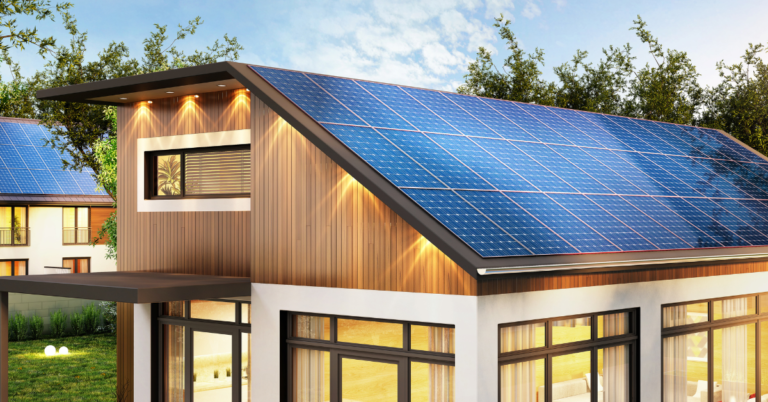
Is This Step For You?
IT DEPENDS. Installing solar panels may be right for you if:
- It’s a priority to become energy self-sufficient in the long-term and not be reliant on the power grid
- Are willing to make an investment, usually between $8,000-$15,000
- You’re located in a sunny area which will allow you to harness more solar energy and generate more electricity
- Your house and roof are well-suited for solar panels
Checklist
- Use the guide to determine whether solar is right for you
- Contact a trusted solar professional in your area
- If you have essential appliances that don’t run on electricity (mainly natural gas), you can consider electrifying your home so that you can power those appliances with your solar system.
Resources
Get a solar quote from SunPower, our trusted, favorite solar provider.
Everything Else (Besides Food & Energy)
Food and energy are categories of their own, because they are essential for every single person to live a healthy, comfortable life.
However, there are a lot of other items that will definitely come in handy during an emergency situation. We compiled a checklist of all other items you should consider to be fully prepared for an emergency (as comprehensive as possible).
Products: We’ve done extensive research, comparisons and analysis, and included our top picks for many of these items to save you time and money on doing your own research – our picks won’t disappoint you.
These are items you should purchase and store in a safe place for an emergency, hopefully to never be used. But in an emergency situation, you’ll be very glad you have them.
Cost: The cost varies a lot based on your specific circumstances, but usually ranges from $200-$3,000.
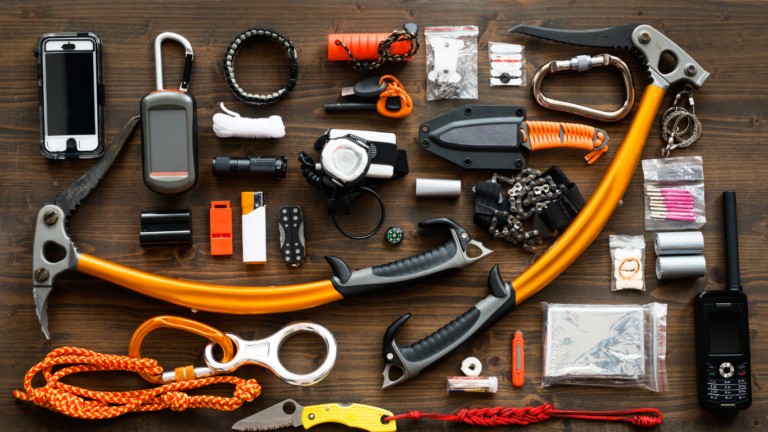
Category | Checklist Items | Our Top Product Picks |
Emergency Shelter:
Provide shelter, warmth, and protection during emergencies |
| Tents Other |
Medical & Safety:
Ensure personal safety and medical care in emergencies |
| |
Communication and Information:
Stay connected, informed, and communicate during emergencies |
| |
Emergency Cooking
Have all the equipment you need to flexibly cook your food in less-than-ideal situations. |
| Cooking equipment & fuel Outdoor grills
Outdoor stoves |
Sanitation and Hygiene:
Maintain cleanliness, hygiene, and waste management |
| |
Clothing and Personal Items:
Meet clothing, personal, and baby care needs in emergencies |
| Rain gear Other |
Personal Finance and Documentation:
Manage financial and important documentation needs in emergencies |
| |
Miscellaneous:
Miscellaneous items useful for various emergency situations |
| Multi-purpose knife Useful tools
Storage containers |
Home Security: Enhance home security in emergency situations |
| |
Self-Defense and Personal Protection: Portable items you can carry with you to protect you in dangerous situations |
|
Now it’s time to get preppin’!













